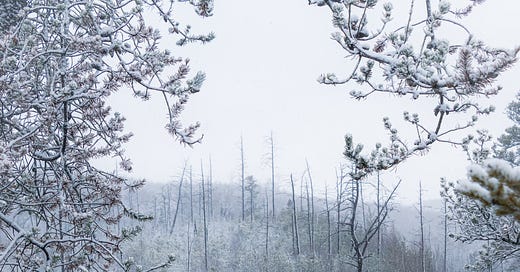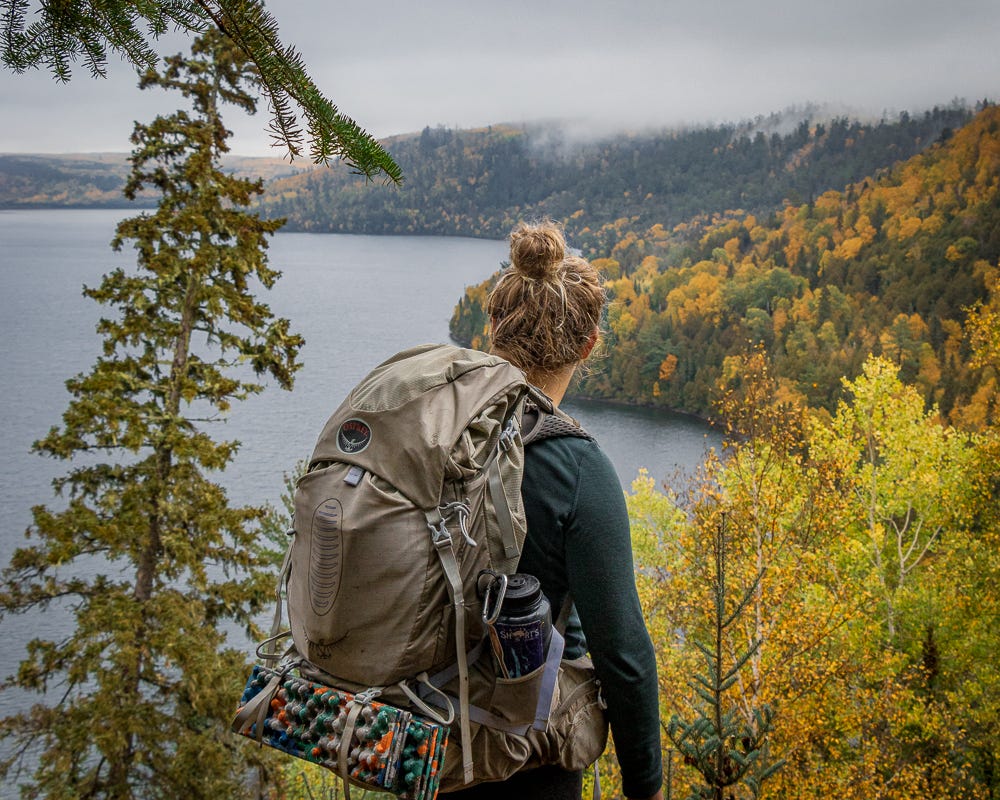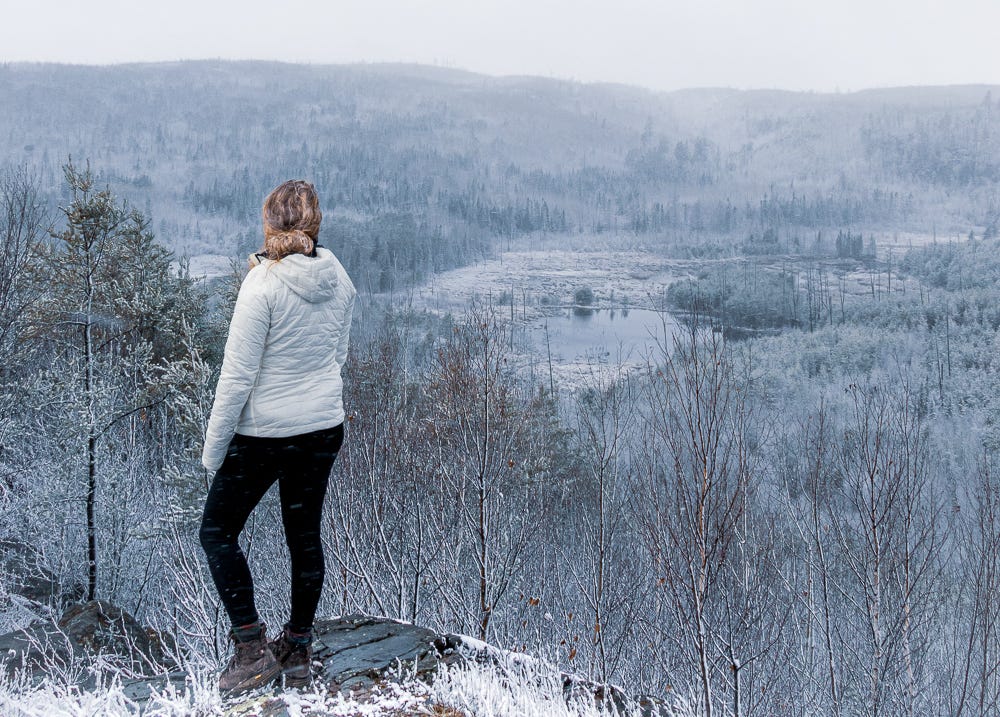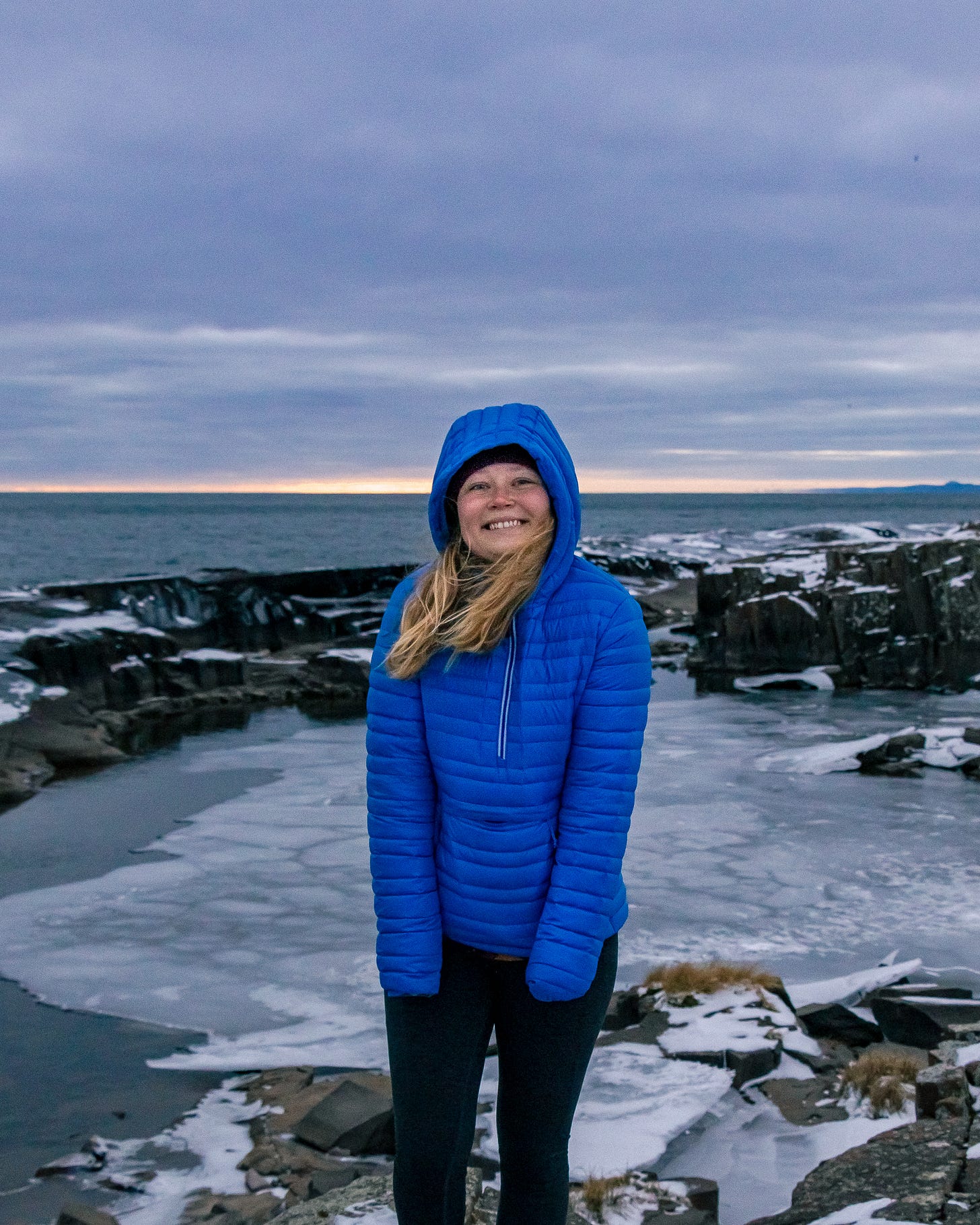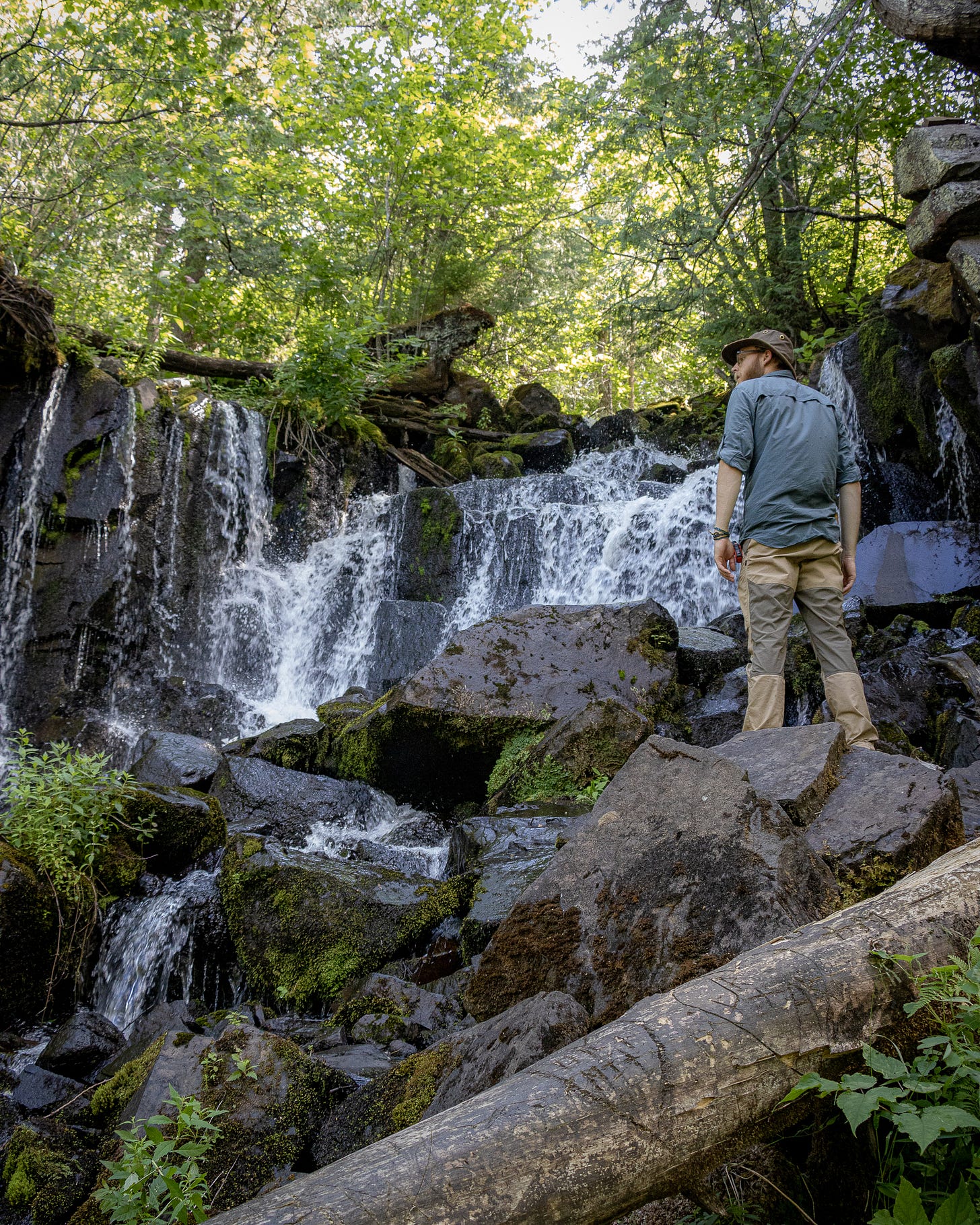Last week I re-shared an older article I wrote about my favorite gear and how to layer for winter hiking! I got a lot more follow up questions than I expected, hence this follow up blog post.
You can find an updated version of the original post here, and the second article, focusing on best outdoor gear for women here.
Hiker Emily rocking a Wintergreen jacket
Winter Hiking Gear, Simplified:
Basically to have a successful and fun winter hike you need four things— a good baselayer (wool), a puffy/outerlayer, warm pants, and extra traction for your boots.
For midlayers, you can use any old fleece or sweater most of the time if it isn’t getting wet or touching your skin.
Note: this post contains affiliate links; that just means if you click a link and decide to buy something, I make a small commission at no cost to you. All gear opinions are my own.
Baselayers:
Ideally you want a wool or synthetic, lightweight base layer. The idea is that you want something that will still be warm when wet, especially since you might sweat.
Smartwool Baselayers are wool and available in different weights. I’ve used my Smartwool baselayer for four whole years and several hundred miles of kayaking and hiking. Strongly recommend. The only con is that wool is itchy, and I have trouble sleeping in it.
Puffy/ Outer Layers:
The perfect, deceptively warm layer for snowy hikes. Or walking around town. Or wherever. I have more puffys than I am proud of, but in my defense, one was from a thrift store, and one is a product I’m testing.
Helly Hansen’s Lifaloft Hooded Jacket is my current “easy hike” puffy, and it was actually a gift from my delightful partner who heard me talking with a friend about how pretty it is, but the white is impractical. He bought it for me because I don’t have a lot of pretty things. It’s warm, and a great puffy and beautiful, but only makes it out on hikes I know it won’t get it dirty for the obvious reason. The same puffy is available in black, an infinitely more practical choice. (It’s so pretty I have no regrets. I have no pretty clothes, might as well have a pretty puffy).
Stio Pinion Down Pullover probably the most unique puffy I own. Usually puffys have a front zip; this one instead is a pullover with a quarter zip and a front pocket. I initially planned to use this as a cozy outer layer for driving around, or shooting photos in the early morning because it reminds me of a sleeping bag you can wear, but I’ve tried it on a few winter hikes and I’ve been more than pleasantly surprised!
The quarter zip keeps it warmer than a front zip, there’s a secret pocket for keys, and it the down filling is much warmer than I expected (it’s actually the warmest puffy of the three I own by a lot). I was pretty sure the hoodie design would make it hard to get on and off over layers, but that has not been the case. I do recommend sizing up for outer layers in general, but overall I’m a big fan of the Pinion Down Pullover.
This is an affiliate link, and you can use the code MADDYSTIO15 for 15% off your first-time purchase. All opinions are my own.
Arx’teryx Atom Hoodie I absolutely scored one of these at a thrift store a few years ago and I have put it through its paces. It’s my preferred backpacking/summer paddling outer layer, and makes a good mid layer for the winter. You can get a thicker version than I have for winter, but I haven’t tested those out. All and all, it’s a darn good jacket that can take a lot (a lot) of abuse.
Warm Pants
I don’t hike in snow pants. I find it to be restrictive and uncomfortable. Instead, I layer a pair of leggings underneath either a pair of fleece pants, rain pants, or some kind of shell pant. Basically, a looser and water resistant layer to protect an inner, warmer layer.
I’ve got a pair of Patagonia rain pants, and I’ve heard really good things about Fjallraven pants and will probably crack and buy a pair soon.
Traction
When hiking on snow and ice, sometimes the traction in your boots won’t quite cut it. I recommend YakTrax for some extra traction. I’ve had good luck with the running version of the cleats, which have both coils and smaller spikes at the toe.
A Hiker’s Guide to the Gunflint Trail is now live for paying subscribers! This 20 page PDF digital download covers hiking trails along the Gunflint Trail and in the Arrowhead Region of Minnesota, with a focus on day trips, 2-3 day backpacking routes, the best views, and practical information like safety tips and LNT in the area.
While many of the trails included have been covered in my free online trail guides, this handy guide has tons additional information and puts all of those trails in one useful document.
By becoming a paying subscriber of Hello Stranger newsletter you get access to paywalled essays like Deep Trouble on Isle Royale, access to A Hiker’s Guide to the Gunflint Trail and all future PDF hiking guides.
Subscribers of Hello Stranger help me keep the vast majority of my writing and trail guides online & free for everyone!

